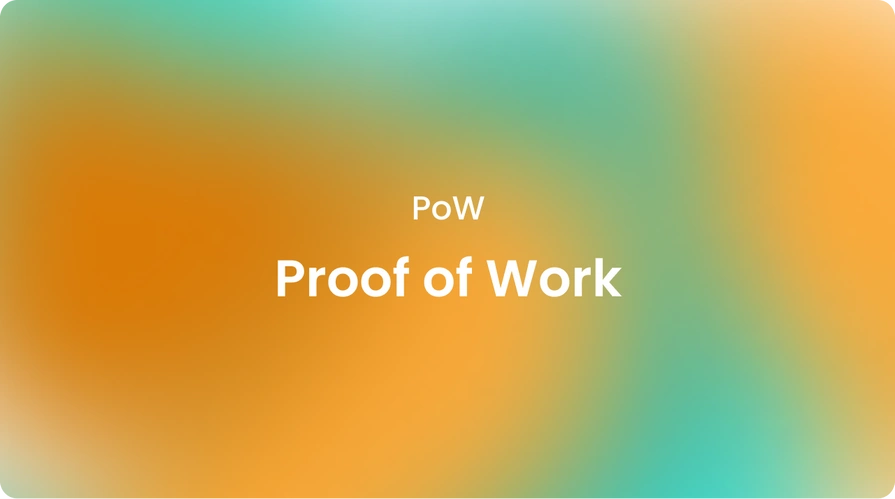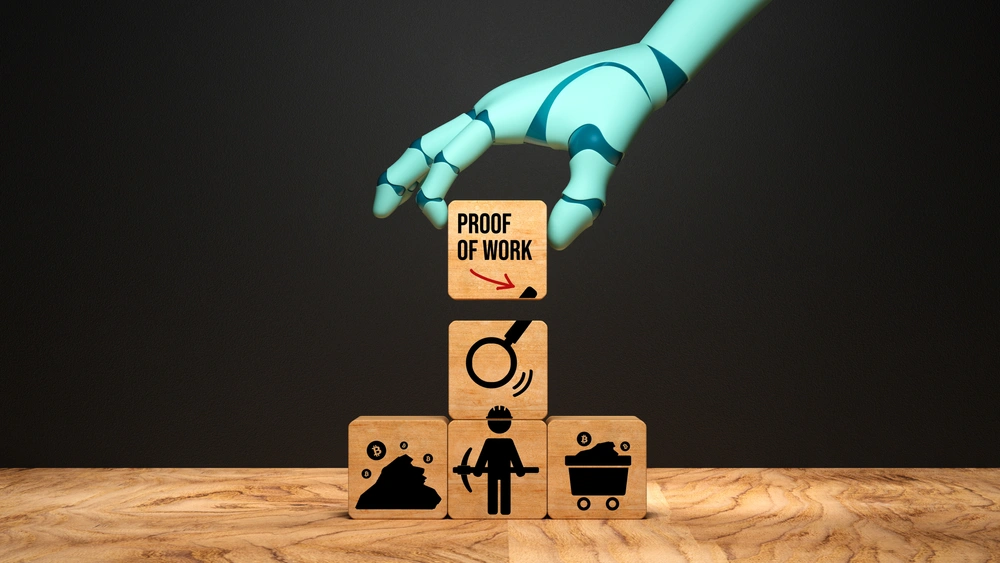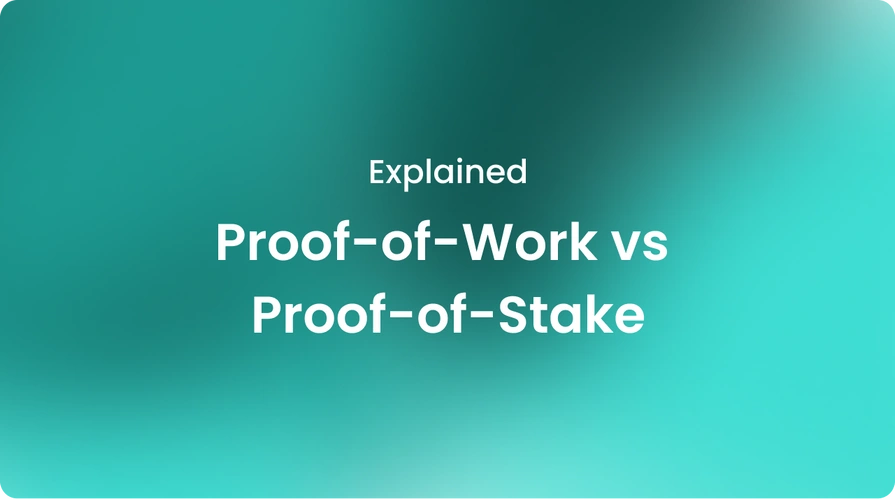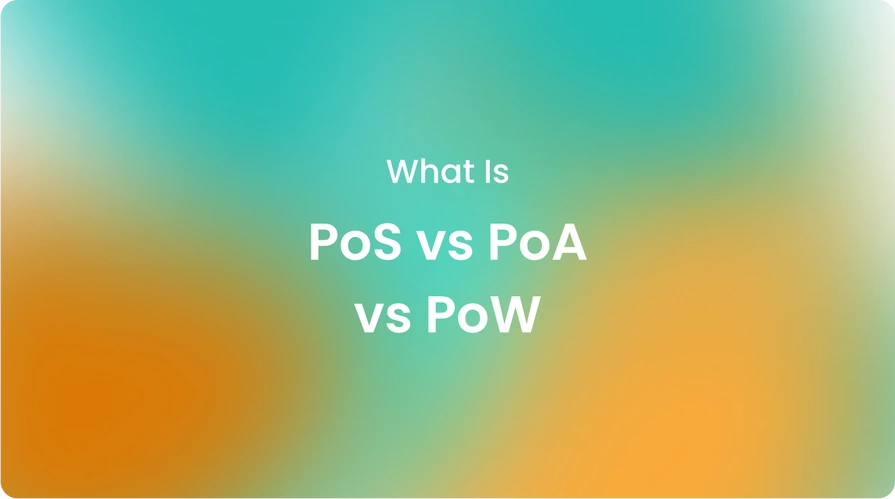|technology, knowledgehub
What Is Proof of Work (PoW)?

Blockchain technology continues to revolutionize our world in many ways, and at the heart of any blockchain lies the all-important consensus mechanism, such as proof of work, that validates transactions and secures the network in a decentralized manner.
In this article, we will explore blockchain proof-of-work and proof-of-stake—two of the most popular consensus algorithms—to understand how they work and compare their benefits. By the end, you will have a strong grasp of these fundamental blockchain concepts.
As first introduced in Bitcoin in 2009, proof-of-work, or PoW, uses computational power and electricity to secure the network. In PoW blockchains like Bitcoin and Ethereum (until recently), miners compete to be the first to solve a complex cryptographic puzzle and add the next block to the chain.
The person who solves the puzzle first receives new coins. This process, known as crypto mining, requires a great deal of processing power. Over time, the puzzles get increasingly difficult to complete, so a 10-minute block time remains consistent as more miners join.
How does PoW work in blockchain?
Miners must vary a nonce value until the block's hash output meets the network's difficulty criteria to successfully mine a block. This trial-and-error process consumes an enormous amount of electricity in an effort to be the first miner to find a valid hash.
After finding a block, the miner adds it to the chain and receives the rewards. PoW's complexity acts as a barrier, making it costly for bad actors to take control of more than 51% of the network. The process, while energy-intensive, provides security through cumulative computational effort.
What does PoW mean in crypto?
Proof-of-work in blockchain means using computing power to compete to solve complex puzzles and receive rewards. Crypto mining refers to this competitive validation process at the core of blockchains like Bitcoin.
PoW provides security through the cumulative computational effort of mining blockchain nodes around the world. It makes the network costly and difficult to manipulate, though at the expense of high electricity use, which has fueled criticisms of its unsustainability.
What is an example of proof of work?
To give a simple example, the Bitcoin blockchain uses the SHA-256 algorithm to generate a 64-digit hexadecimal number as the "hash" output of candidate transaction blocks. Miners adjust the nonce value attached to each block until the hash meets or exceeds Bitcoin's current target difficulty.
The first miner to find a valid low-value hash announces it to the network and earns the block rewards. During a ten-minute period, miners repeat this computationally intensive process by adding new blocks to extend the Bitcoin blockchain.
As we discuss in the first section, PoW becomes exponentially more difficult over time by design. This slow and steady adjustment maintains decentralization while also ensuring consistent and predictable block times, even as hashing power on the network grows dramatically with its value.
Bitcoin and many other cryptocurrency projects have embraced PoW's proven ability to keep blockchains secure through competitive incentives. If you want to learn more about Bitcoin's hash rate, make sure to check out our complete guide!
Why is proof-of-work so popular?
With the creation of Bitcoin in 2009, proof-of-work established itself as the seminal consensus algorithm for public blockchains by providing security and decentralization without an authority.
According to a recent study, 85% of Indians and 30% of East Africans lack access to traditional banking, illustrating PoW's ability to achieve financial inclusion on a global scale. Its resilience has endured over a decade of real-world use and immense value at stake without failure.
PoW continues to gain popularity for cryptocurrencies focused on open participation and resistance to censorship. Its competitive crypto mining process naturally aligns incentives among diverse global actors.
What is the difference between PoS and PoW?
While PoW uses crypto mining hardware resources to verify transactions, proof of stake (PoS) instead leverages the economic stake of crypto token holders to achieve consensus.
Validators in PoS must post their existing crypto coins as a security deposit to validate new blocks, receiving small rewards based on their percentage of the total staked amount. This approach promises efficiency gains since it doesn't rely on electricity-intensive mining.
However, some argue PoS could allow wealth to translate directly into influence if the largest stakeholders form coalitions to dominate block production. PoW maintains decent work distribution through an energy "cost of entry," whereas staking favors those who already own the most coins.
Is proof of stake decentralized?
As an alternative to PoW, proof-of-stake, or PoS, algorithms assign the right to validate blocks based on the stake, or amount of crypto coins, held by participants. Validators in PoS receive rewards based on their existing coin holdings rather than hashing power.
Ethereum and Cardano are two major blockchains that have transitioned to PoS. While concerns exist around wealth concentration with PoS, studies show that staking pools do promote participation across the network in a decentralized manner.
Which is better, PoS or PoW?
Both consensus algorithms have pros and cons today. While PoW is more decentralized and battle-tested, its massive electricity needs raise environmental concerns that PoS helps address. However, PoS risk remains around potential centralization over time.
The "best" method depends on unique factors like the blockchain's purpose, design considerations, and objectives around efficiency versus absolute decentralization.
Many now believe proof of work and proof of stake could co-exist, each suited for different applications based on priorities. Continued live experimentation and the resilience of open-source communities will push the frontier of consensus mechanics.
What is safer, PoS or PoW?
When evaluating the metrics, both PoS and PoW can be argued for in terms of security. PoW has endured many years of real-world attacks without failure through its enormous hashing resources committed to the network.
Meanwhile, the largest PoS blockchains like Cardano have passed security audits and leveraged innovative techniques like Ouroboros to prevent nothing-at-stake problems.
Both consensus systems have safeguards and remain works in progress. In PoS, properties like finality and liveness depend on stake distribution assumptions that may or may not hold long-term as the protocol evolves.
PoW currently has more battle testing on a large scale, but PoS innovations continue to narrow advantages over time if designed and implemented properly.
Both approaches involve trade-offs between security rigor and sustainability that projects must consider based on priorities and technical risk tolerance.
However, with proper economic design and robust auditing like Cryptobunq, the emerging PoS ecosystem is demonstrating potential for safe, secure transacting.
Cryptobunq is a crypto-friendly digital bank offering various services in crypto and blockchain. You can integrate with Cryptobunq and discover the best way to store crypto through multi-signature crypto wallets and transaction processing exchange APIs.
You can also benefit from other crypto solutions, from batch payments to tokenization, with Cryptobunq. CBQ is a one-stop-shop crypto service provider you can trust for your various crypto projects.
The bottom line
Proof-of-work and proof-of-stake highlight the constant evolution occurring within blockchain consensus. As the technology matures, new arguments and counterarguments will emerge for each approach.
Many now agree that different consensus algorithms may co-exist based on varying priorities around security, sustainability, and the decentralized nature of participation. Blockchains will continue iterating on proven concepts.
Cryptobunq offers many crypto services, empowering experimentation and real-world use across many consensus models. If you want to dive into the world of blockchain consensus securely, CBQ is here for you. Explore our case studies and contact us for more crypto solutions!













